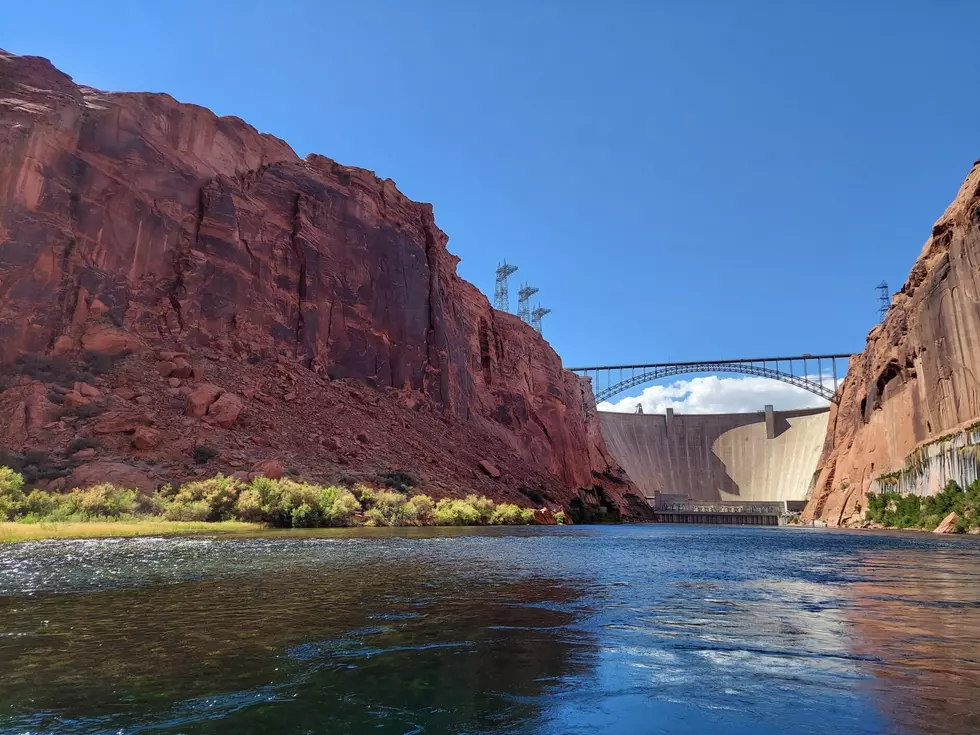
Groups: In managing Colorado River dam, feds ignored climate change
PHOENIX (CN) — Conservationists asked the Ninth Circuit Tuesday to reverse a summary judgment finding that the federal government’s plan to manage water flow through the Glen Canyon Dam properly addressed the future impacts of climate change.
Amid a two-decade megadrought, the water levels in Lakes Powell and Mead, Arizona’s two largest reservoirs connected by the Colorado River at either mouth of the Grand Canyon, have each dropped to one-third its previous level. Studies suggest the entire Colorado River system, which serves more than 40 million Americans across seven states, is likely to run completely dry before the drought ends.
Conservationist groups Save the Colorado, Living River and the Center for Biological Diversity asked the U.S. Department of the Interior to consider emerging climate science and the severe potential of climate change in updating its management plan in 2016 for the Glen Canyon Dam on Lake Powell, which has a water level 3,564 feet above sea level. Experts say the dam will lose hydropower if the water level drops below 3,490 feet.
The Bureau of Reclamation and the National Park Service, two sub agencies of the Department of the Interior, eventually developed and considered seven alternative plans to manage water releases from Lake Powell through the Glen Canyon Dam, and ignored the conservationists’ proposed alternatives that they say better account for future climate change. The conservationists sued in 2019, four months after sending the department a letter detailing new research, which still hasn’t been answered.
“Isn’t that a NEPA violation right there?” asked U.S. Circuit Judge Mary Murguia, a Joe Biden appointee, referencing the National Environmental Policy Act during the Tuesday morning hearing.
Attorney John Bies, representing the Interior Department, said the department is only required to respond to letters representing new information, which he said wasn't the case for the plaintiffs’ letter.
A federal judge issued summary judgment in the department's favor December 2022, finding the plaintiffs didn’t prove the department hadn't analyzed the effects of climate change. The conservationists appealed two months later.
James Saul, an attorney for the conservationists, told the three-judge panel that the Interior Department only considered possibilities in which the dam would still produce hydropower.
“What the bureau did not do is consider any alternative that would have recognized a declining capacity to generate power, or even in the worst case scenario, potentially consider a total lack of hydropower capacity,” Saul said.
The department used historical water flow modeling from 1906 to 2010 to predict future flow potentials, though attorney Bies admitted to the panel that it didn’t factor the bottom 30% of flow rate possibilities into its plan.
“Why isn’t the absence of the driest 30% significant to your analysis?” asked U.S. Circuit Judge Anthony Johnstone, a Joe Biden appointee.
Bies said the driest historical years were weighted differently in the analysis, making up for the omission of the bottom 30%.
He also argued that the agencies were tasked with exploring only the timing of water releases throughout the year, not the volume of water released. Saul pointed out that the agencies’ assumption of a minimum seven million acre feet of water through the dam per year was erroneous because of the worsening drought.
“What good is studying the variation of flows if there’s no water in it?” Johnstone asked.
Bies said the volume of water released through the dam is governed by existing statutes and guidelines, and isn’t up to the department to change. Saul disagreed.
“The argument that the [management plan] is unrelated to the annual release volume, and therefore would be unaffected by future climate change, is belied by the environmental impact statement itself,” Saul said. The Bureau of Reclamation admitted in the statement that future climate change would force it to alter the volume of release on a nearly weekly basis.
Of the seven alternatives considered, the department landed on a condition-dependent flow that would increase and decrease based on resource conditions. The plaintiffs argued in their suit that the plan will reduce hydropower, increase price and increase greenhouse gas output.
Before filing suit, the plaintiffs suggested decommissioning the Glen Canyon Dam and allowing more water to flow through the canyon to Lake Mead, both to avoid Lake Mead losing hydropower and to benefit the wildlife living downstream.
U.S. Circuit Judge Michael Hawkins, a Bill Clinton appointee, rounded out the panel. The judges didn’t indicate when they will rule.
